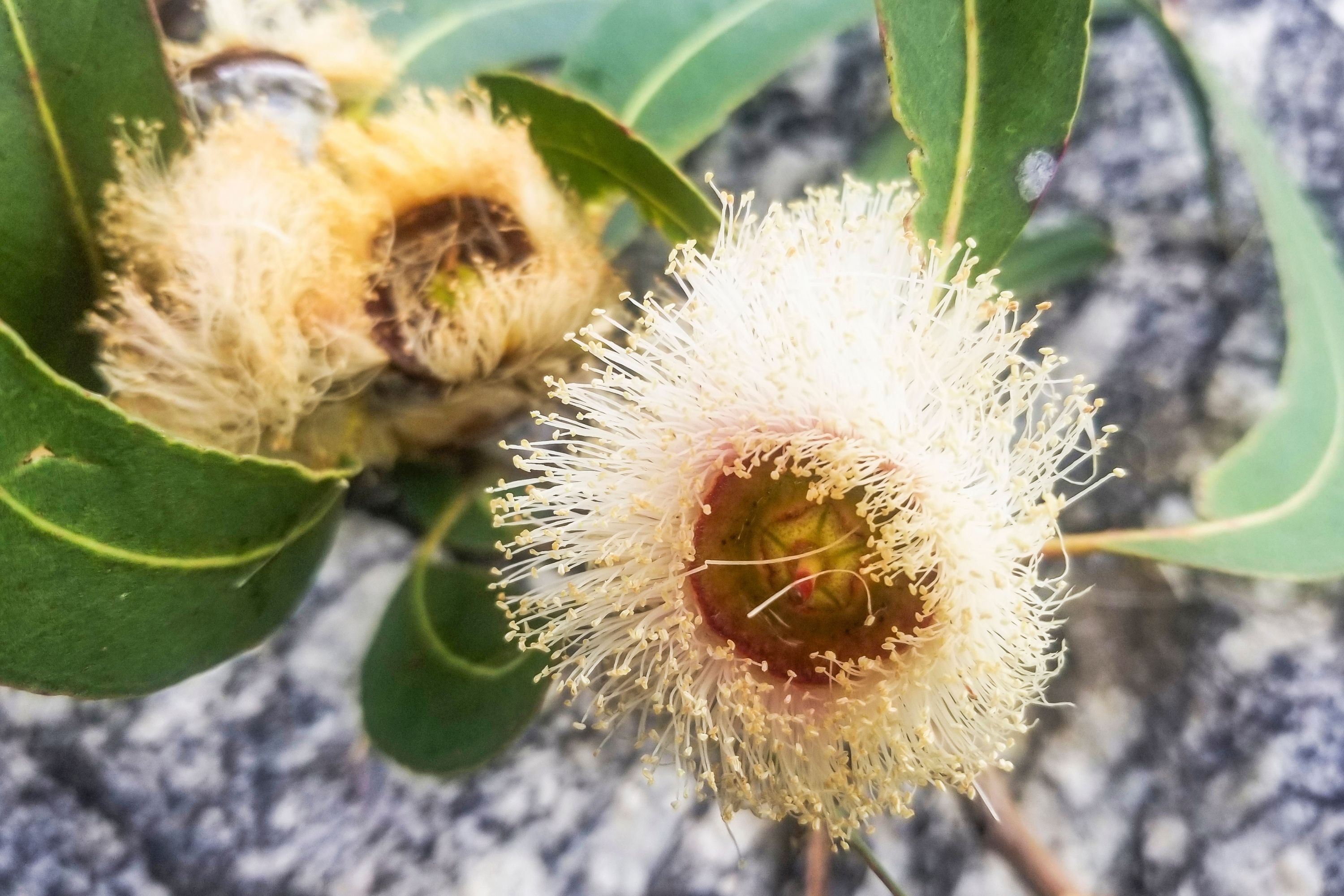Faulconbridge mallee ash
(Eucalyptus burgessiana)

Description
Eucalyptus burgessiana, commonly known as the Faulconbridge mallee ash, is a small tree or mallee that is endemic to New South Wales. It has smooth bark, narrow lance-shaped or curved adult leaves, flower buds arranged in groups of between seven and eleven, white flowers and barrel-shaped or cup-shaped flowers. Eucalyptus burgessiana was first formally described in 1972 by Lawrie Johnson and Donald Blaxell from a specimen in Faulconbridge. The description was published in Contributions from the New South Wales National Herbarium. The specific epithet (burgessiana) honours Colin Burgess (1907–1987) who was knowledgeable about the flora of the Blue Mountains. Faulconbridge mallee ash grows in mallee shrubland between Springwood, Faulconbridge and Jervis Bay. Eucalyptus is a genus of over seven hundred species of flowering trees, shrubs or mallees in the myrtle family, Myrtaceae. Along with several other genera in the tribe Eucalypteae, including Corymbia, they are commonly known as eucalypts. Plants in the genus Eucalyptus have bark that is either smooth, fibrous, hard or stringy, leaves with oil glands, and sepals and petals that are fused to form a "cap" or operculum over the stamens. The fruit is a woody capsule commonly referred to as a "gumnut". A few species are native to islands north of Australia and a smaller number are only found outside the continent. Eucalypts have been grown in plantations in many other countries because they are fast growing and have valuable timber, or can be used for pulpwood, for honey production or essential oils. In some countries, however, they have been removed because they are highly flammable. Eucalypts vary in size and habit from shrubs to tall trees. Trees usually have a single main stem or trunk but many eucalypts are mallees that are multistemmed from ground level and rarely taller than 10 metres (33 feet). There is no clear distinction between a mallee and a shrub but in eucalypts, a shrub is a mature plant less than 1 m (3 ft 3 in) tall and growing in an extreme environment. E. vernicosa in the Tasmanian highlands, E. yalatensis on the Nullarbor and E. surgens growing on coastal cliffs in Western Australia are examples of eucalypt shrubs.
Taxonomic tree:







